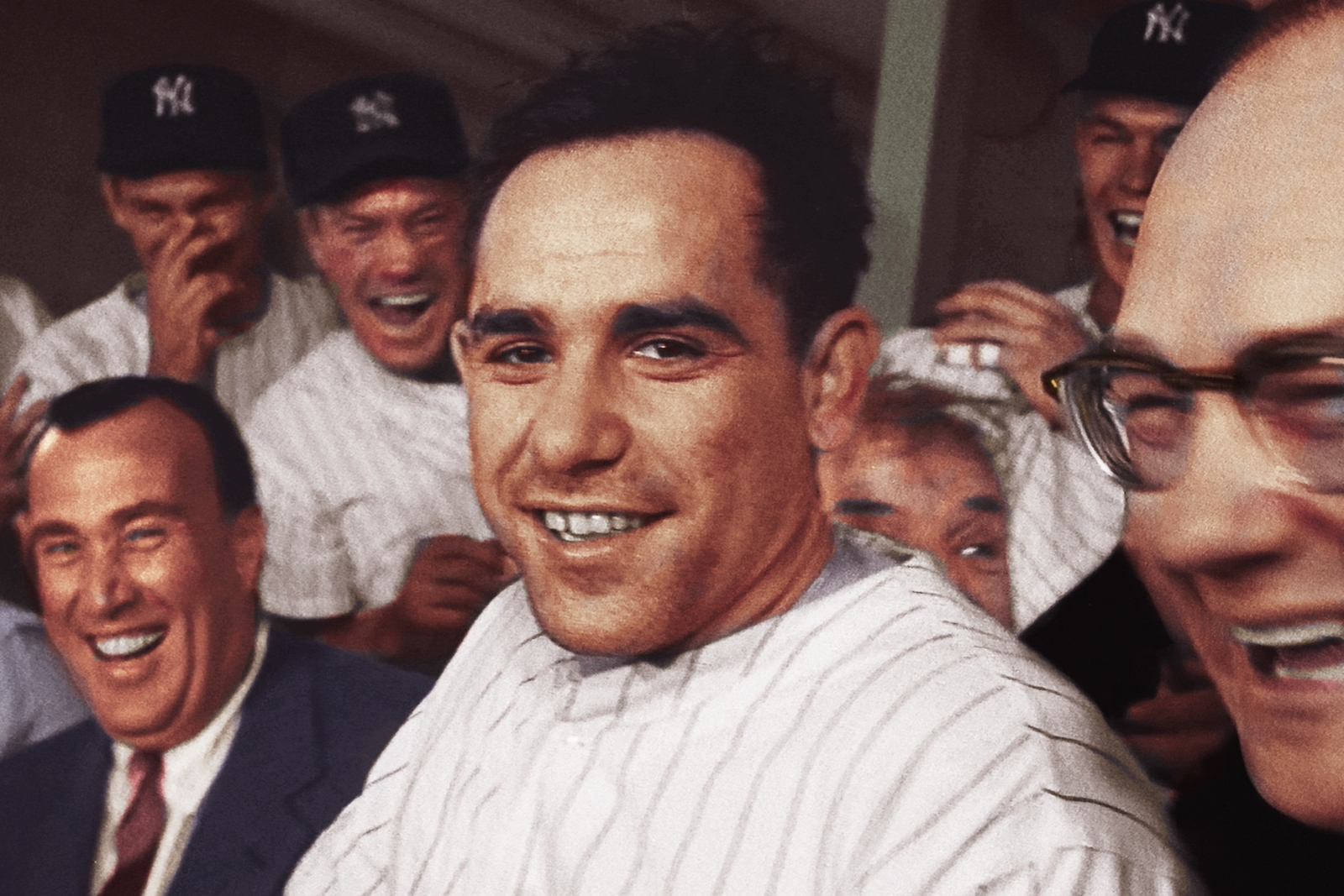
New Film Makes the Case that Yogi Berra is the GOAT
In a perfect world, we would judge each other by character, personality, integrity, and accomplishments. Unfortunately, too many still judge a book by its cover, and therein lies the only explanation for why Yogi Berra was not on the field at the 2015 All-Star game with Hank Aaron, Willie Mays, Sandy Koufax, and Johnny Bench as one of the greatest living players.
Berra, though he never cut the imposing athletic figure as those players, certainly fulfilled the four attributes listed above, including his accomplishments in the very game that was offering tribute to the greats of the game. Director Sean Mullin expertly proceeds to prove that Lorenzo Pietro “Yogi” Berra was not just one of the best baseball players of all time, he was also a war hero, beloved father, grandfather, husband, public figure, and above all, a world-class person.
What Mr. Mullin does to elevate this documentary is not just focus on Yogi’s fabulous career as a player, but also on the rest of his life. This allows us to understand what a special man he was. Yogi’s granddaughter Lindsay frequently pops up for commentary, and she makes it abundantly clear that while Yogi learned to accept being baseball’s most overlooked superstar, she certainly has not.
After all, Berra is the all-time leader in World Series championships as a player with 10, and has 13 rings total, including his time coaching. He was an 18-time All-Star and was voted onto the All-Century team. Remarkably, Yogi caught both ends of 117 doubleheaders in his career, and of course, caught Don Larsen’s World Series Perfect Game. As a New York Yankees player and coach, his presence in pinstripes linked the careers of Babe Ruth, Joe DiMaggio, Mickey Mantle, Reggie Jackson, and Don Mattingly.
Those are some of the pieces of a life that are indelibly linked to baseball history, and in this documentary, we learn even more. He grew up on the same St. Louis street as Joe Garagiola, another future Major League catcher, and the Branch Rickey story involving the two is fascinating. After signing with the Yankees for $500, Berra enlisted in the Navy and found himself in the middle of the Normandy landings. Lindsay recounts the story of why Berra never received his Purple Heart, and the process she went through to ensure that he received a posthumous Presidential Medal of Freedom. He was married to Carmen, his wife, for 65 years, and they raised three sons, Dale (a Major Leaguer), Tim, and Larry. The story of how Carmen named Dale is one of the highlights of the film.
Lest you buy into the image of Yogi as the cartoon character (Yogi Bear), or the lovable post-career pitchman for Amtrak, Aflac, Yoo-hoo, and Miller Lite, pay particular attention to the segment on Jackie Robinson’s steal of home in the World Series. This will clue you in on what an intense competitor Yogi was – helping to explain his incredible track record of winning. Of course, none of this is meant to minimize Yogi’s creative use of the English language. He became iconic for his malapropisms; often referred to as “Yogiisms.” This includes the famous one from which this film’s title was derived, “It ain’t over till it’s over,” right up there with “I really didn’t say everything I said.”
Berra’s rift with Yankees owner George Steinbrenner is analyzed, leaving us respecting Yogi’s years-long stance over being disrespected. Their eventual make-up led to an incredible “Yogi Berra Day” at Yankee Stadium, where the game remarkably lived up to the pre-game moment when Don Larsen threw out the ceremonial first pitch to Yogi. Director Mullin capitalizes on a long stream of former teammates, opponents, players, writers, and family members to provide insight into Yogi Berra. There is little doubt more would have loved to contribute, as much in the way Yogi gives credit to Hall of Famer Bill Dickey for tutoring him on catching, so many are anxious to offer stories on how Yogi Berra influenced them. Let’s end this with more of Yogi’s wisdom. “If you come to a fork in the road, take it.” And when it comes to this excellent and entertaining documentary from Sean Mullin, keep in mind that “You can observe a lot by watching.”

